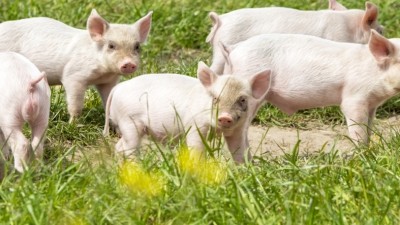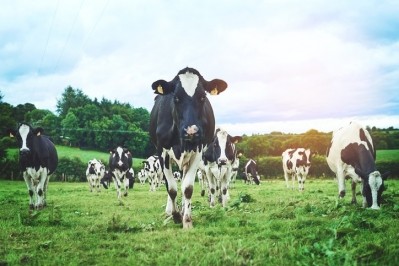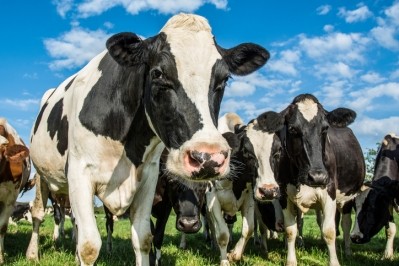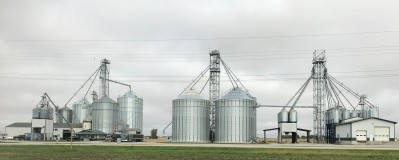Blending alfalfa, red clover may support silage quality, limit protein degradation
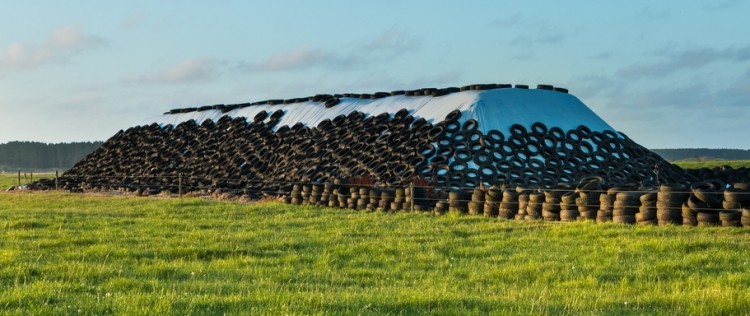
An international team of researchers from China and the US explored ways to alter fermentation elements, nitrogen distribution, protein levels and protease activities during the ensiling process using different mixes of alfalfa and red clover. The group members published their work in the Journal of Dairy Science.
“The objectives of this study were to evaluate the effects of ensiling alfalfa mixed with red clover at different ratios on dynamics of protein degradation and protease activities during the ensiling and determine the optimal mixing ratio for good fermentation quality and protein preservation,” the researchers said. “We hypothesize that ensiling red clover with alfalfa can improve fermentation quality, inhibit protease activities, and reduce proteolysis of the silage without negative effects on fermentation quality.”
The research team found that as more red clover was mixed into the silage total nitrogen (N) decreased along with proportions of non-protein N, peptide N, and free amino acid N. Ammoniacal nitrogen (NH3-N) amounts also decreased linearly.
“The study showed that protein degradation and protease activities weakened as red clover proportion increased in the mixture without negative effects on fermentation quality in laboratory-scale silos,” the researchers said, adding, more work to assess the N efficiency of a blended silage when fed to dairy cows is needed.
“The 50:50 ratio was the optimal mixing ratio of alfalfa with red clover, and showed good fermentation quality with lower pH and higher lactic acid concentration than pure alfalfa silage, weakened proteolysis with protease activities and NH3-N proportion closer to pure red clover silage than alfalfa, and also had more TN content than pure red clover silage,” they added.
Why mix alfalfa and red clover?
Proteolysis takes places when alfalfa is ensiled, the researchers said. Part of the true protein is degraded into non-protein nitrogen (NPN) comprised of peptides, free amino acids (FAA) and NH3-N. NPN may be 44-87% of the total protein.
The availability of true protein also falls in silage alfalfa because more true protein can be bound, they said.
When lactating dairy cows were given alfalfa hay or silage, cows fed the silage had better dry matter digestibility, along with higher ruminal NH3 and milk urea N – indicating poor N use, they said. “The economic loss and potential environmental pollution call for a better approach to minimize proteolysis in alfalfa during ensiling,” they added.
Red clover has a lower proteolysis rate and less soluble NPN during ensiling, they said. This has been linked to a copper-containing enzyme found in red clover – polyphenol oxidase (PPO).
Protein protection has not been found in ensiled transgenic alfalfa expressing PPO as there is a lack of the endogenous phenolic substrate, although there was reduced proteolysis in the alfalfa when o-diphenols were added, the researchers said. “Both PPO and o-diphenol substrate may be added to alfalfa by mixing alfalfa with red clover,” they added.
“A few studies attempted to ensile alfalfa with red clover to reduce proteolysis,” they said. Previous work “reported that mixing red clover extract and alfalfa extract at 1:1 ratio reduced alfalfa proteolysis by 70% compared with untreated alfalfa extract in laboratory scale. [And] ensiled alfalfa/red clover bi-crops in 5 sowing ratios and reported that after ensiling, soluble N and FAA concentrations decreased with increasing red clover percentage and 1:1 was the optimal sowing ratio.”
But the earlier study had a difference between sowing ratio and final ratios of alfalfa and red cover at ensiling, they said. Additionally, other indicators of proteolysis were not examined.
It also has been reported that lactating dairy cows may use N from red clover, rather than from alfalfa, more efficiently, the researchers said. “These studies indicate that ensiling red clover with alfalfa has the potential to inhibit proteolysis and improved protein utilization by animals,” they added.
Methods and materials
During the ensiling trials, red clover and alfalfa were harvested and partially dried before being ensiled for 1, 3, 7, 15 and 30 days, the researchers said. Blends used during the trial were a ratio of alfalfa to red clover.
The mixes included 100% alfalfa, 70:30 alfalfa to clover, 50:50, 30:70 and 100% red clover, they said. Mixes also received Lactobacillus plantarum and sucrose to encourage fermentation.
Alfalfa and clover samples were tested for levels of non-detergent fiber (NDF) and acid detergent fiber (ADF), they said.
Silage samples were checked for pH, concentration of organic acids, FAA-N and NH3-N, protein fractions, soluble N, neutral detergent insoluble nitrogen (NDIN), acid detergent insoluble nitrogen ADIN and peptide-N, they said. Protease activity also was recorded.
Results
As anticipated, the red clover demonstrated a weaker protein breakdown and reduced protease activity during the ensiling process, the researchers said.
“It suggests that alfalfa ensiled with red clover has the potential to inhibit proteolysis,” they said. “When feeding to dairy cows, it is important to study the effects on intake and production, especially N efficiency and urinary N excretion. Thus, animal experiments on mixed silage are needed in the future.”
Adding more red clover to the silage mix decreased N levels within the silage, while boosted NDIN and ADIN proportions and the protein fraction PC, the researchers said. However, it lowered NH3-N linearly along with proportions of FAA-N, NPN and protein fractions PA1 and PA2.
The final pH was lower for the mixes with equal amounts of clover and alfalfa and for the all clover silage than for the only alfalfa feed, they said. Lactic acid concentration after 30 days was higher for silages with 50%, 70% or 100% red clover compared to the silage with only alfalfa.
“Overall, 50:50 was the optimal mixing ratio of alfalfa with red clover, showing good fermentation quality with lower pH and higher lactic acid concentration, reduced protease activities and proteolysis compared with pure alfalfa silage, and also more total N content than pure red clover silage,” the researchers said.
Increasing levels of red clover in the silage lowered proteases including carboxypeptidase, aminopeptidase, and acid proteinase activities, they said. But, no differences were found for aminopeptidase or acid proteinase activities for the silages with 50, 70 or 100% clover.
Source: Journal of Dairy Science
Title: Effects of mixing red clover with alfalfa at different ratios on dynamics of proteolysis and protease activities during ensiling
Authors: Xujiao Li, Jipeng Tian, Qing Zhang, Yun Jiang, Zhe Wu, Zhu Yu
DOI: doi.org/10.3168/jds.2018-14763
